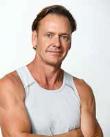
LEARNING FROM EXPERIENCE
It is no secret that retirement is more successful for some than for others. One of the secrets to success is planning that begins decades earlier. Here we speak with a 67-year‑old who has begun his (semi) retirement with style and hear his real-life tips on how to make your retirement dreams happen.
INSIGHTS
Financial MATTERS affecting your lifestyle
Ewan Brown couldn’t be happier with his retirement, partly because he is not yet fully retired. The 67-year-old Canberran knows that in order to have a full life he must remain active in a number of pursuits, including work, fitness and family. So he makes sure, through both paid and volunteer positions, that he is working two to three days a week. Any more and his lifestyle suffers. Any less and he risks losing his sense of self.
The most powerful tool Ewan has in his retirement is choice, which is a benefit of being actively and passionately involved in his superannuation planning with his Financial Adviser from his 40s onwards. Some knowledge and training in economics and accounting didn’t go astray, but the basics that brought him financial independence, including tax-effective investing and understanding where your money is placed and how it is performing (the type of insights your Financial Adviser offers you), were exactly that – simple basics.
So Ewan is able to cherry-pick jobs and volunteer roles and decide what suits him. He is able to say how much time he would like to spend working and how much he needs to keep free for his favourite hobby – fishing. And if a particular job doesn’t meet his expectations, which was the case with a recent role, then he has the freedom to search for a new one.
His latest role is a Directorship with the Council on the Ageing ACT (COTA ACT), an industry body representing the interests of older people in the ACT. This gives Ewan the opportunity to spread the word about planning a happy, healthy and wealthy retirement. Ewan has shared some of his learnings for different age groups with us.
Accumulating wealth: 40 to 49 years
At this stage of life, Ewan says, you are likely at the peak of your earning capacity, so your mortgage is less of a drag on your income. It is during this stage of life that an individual or couple finally feels a little wealthier than ever before. Deciding on what to do with this extra wealth, he says, is key to success later in life. “It is very important at this stage to resist the temptation to overspend, rather than to save,” Ewan says. “You’re likely reaching a cusp with some of your debts, so it’s important to start ramping up your saving capacity. The tendency is usually to spend because you’re finding you have better cash flow. But this is the perfect time to start making use of the tax system by looking at the benefits of superannuation and salary sacrificing etc. with your Financial Adviser. Finding out what investment methods are available to you that are tax-effective is the first step in planning for your retirement.”
At the same time as seeking professional advice and being disciplined with your savings, doesn’t mean living a life without enjoyment. Ewan regularly rewarded himself with holidays and nights out at restaurants. It is during this time of life that you should begin to properly picture the lifestyle you would like to have in retirement, and if you don’t have an enjoyable lifestyle now, it will be difficult to imagine a retirement that includes little luxuries.
“While you do have to find that balance and be steeled to making saving a part of your life, don’t be afraid to then take advantage of your current situation, rather than saying, ‘I’m going to leave it all to my retirement’,” he recommends. “A lot of people who do that never achieve anything. They never get to realise their goals because they fail to set themselves up for a retirement lifestyle.”
Ewan says that during this period he always had some form of personal insurance – particularly when it also offered tax benefits – to protect his retirement strategy from unforeseen events.
Before retiring: 50 to 65 years
It was early in this stage of life that Ewan and his partner began planning the physical side of their retirement. They designed and built a house that was shaped around their life together as they aged, rather than one that included children at home.
“This was a deliberate action, to design and build a home that was suitable for a couple,” Ewan says. “We didn’t want a “McMansion”, we wanted a place for retirement. And we don’t see it as our forever home, there is knowledge that there will have to be another move as we age, but it certainly suits our purposes during the first stage of our retirement.”
Planning your retirement in the amount of detail that it deserves, he says, can take up to five years to achieve. Far better to do this before retirement begins and with the assistance of a professional Financial Adviser.
“I starting doing things that other people would usually put off until retirement, such as tidying up all of my finances, documenting important information, knowing what you’ve got and making sure there is adequate insurance coverage, starting new hobbies etc.,” Ewan says.
“I had heard a lot of people say, ‘I’ll get around to that when I retire’, then when they retired they were so busy doing the little things that they couldn’t organise or enjoy any of the big things. People then experience less choice and, they tell me, they lose their identity during the early stages of retirement. They feel they no longer have a purpose. But if you retire on your own terms and under your own control, then you hold on to your sense of importance.”
Retiring: Over 65 years
Planning does not end once retirement begins. Ewan says retirement is a series of steps and must be planned as such. Consider that your life will be lived in five-year stages, he recommends. Figure out what each is likely to look like, or what you’d like it to look like, and prepare accordingly working closely with your Financial Adviser.
Outside of work and volunteer roles, one of Ewan’s highest priorities is fitness. He runs and visits the gym, and says staying active is vital to the enjoyment of retirement, particularly its early stages. The first five to ten years of retirement are typically the ones with all of the travel and adventure, he says.
After that things tend to slow down. “After the first ten years retirement activity and expenses begin phasing off as we move through other stages until we’re looking at advanced life-care planning and what sort of nursing homes we’d like to go into,” he says. Once again he benefit of advance planning and being familiar with the lay of the land comes to the fore.
 Most important, Ewan says, is to never stop doing things. “Volunteer in the community, keep learning and stay fit and active,” he says. “Don’t stop work immediately, it is too much of a jolt.
Most important, Ewan says, is to never stop doing things. “Volunteer in the community, keep learning and stay fit and active,” he says. “Don’t stop work immediately, it is too much of a jolt.
Build networks, make contacts and always keep an eye on the future in case something new comes up.” “The baby boomers were brought up to think we were owed a great retirement. That is not correct. You have to work at retirement to make it fulfilling.”
Why Ewan Brown?
We are often inspired by real-life case studies, especially from those who are happy to share their experience. Ewan’s success in retirement – financially, emotionally and physically – offers great insights into the benefits of retirement planning.
And his connection with the well-respected Council on the Ageing (COTA) provides that professional perspective.
FITNESS FOR LIFE

There are several exercise guidelines to follow
as you head into your 40s, 50s and beyond.
Do it right and there are numerous positive
outcomes.
Guy Leech practices what he preaches. Once an elite athlete who dominated the world of Ironman, he is now a living example of how the body need not break down as it ages. One of Australia’s fittest 51-year-olds, Leech’s health has lot to do with regular exercise. Interestingly though, it has just as much to do with the exercises he has given up. Leech realised in his 40s that his body was not reacting favourably to long runs, so he cut back and has now almost removed running from his program. Other typical exercises from his younger days, such as squats that put strain on the knees, have also been dropped.
“The human body becomes less malleable the older you get,” Leech, now director of Guy Leech Fitness, says. “Our 40s tend to be the first time we begin to see signs that we’re not as young as we used to be.”
“Plus, we all have injuries from when we were younger. Some old injuries can become bigger problems. So there are different rules as you grow older.” The good news, Leech says, is that there is plenty you can do to work around the issues of an ageing body. Success has to do with recognising limitations, and understanding how the body responds to exercise.
Don’t punish your body
When you turn 40, impactful exercises that put stresses on your body should be cut back. “You should do less running and less cross-fit, and more exercises like bike riding, swimming, walking or kayaking,”
Leech says. “These are things that do not put huge strain on joints and tendons.” “If you are doing the same thing all the time, chances are you will get repetition injury. It is easy to think you’re safe doing what you have always done. But a good strategy is to mix things up by swimming one day, doing yoga the next, and walking the next etc.”
Ashley Gardner, Senior Exercise Physiologist at PACE Health Management, says variation is vital for ongoing fitness. “The body needs to be challenged in order to adapt,” Gardner says. “A lot of people stay in their comfort zone when they exercise. The problem is your body gets used to it, so it is not challenged and will not build muscle tissue. Your exercise program needs to change every four to six weeks.”
Strength training is vital
As the body ages, the most important form of exercise is related to strength rather than stamina. The average adult’s muscle mass peaks at the age of 25, Gardner says. After that our bones begin to lose density and muscle tissue decreases. By the time we’re 80 we have lost 20% to 40% of our muscle tissue. This is a big issue.
“Muscle tissue serves a lot of functions,” Gardner says. “Muscles burn 70% to 90% of the body’s glucose, or blood sugar, so muscle helps keep weight down. In burning sugar, muscles also reduce incidence of type 2 diabetes. And muscles load up the bones, encouraging them to maintain their density.”
Weight training does not have to mean a gym membership, Gardner says. It can be as simple as standing from a chair repeatedly without using the armrests, or doing pushups against a table. However you do it, the Australian Government’s Department of Health recommends muscle strengthening activities at least two days a week.
Improve your balance
The other big area for improvement is balance. Once you are of a certain age, Gardner says, you tend to avoid situations where you are required to balance. This leads to slower physical reactions and to more falls. Balance exercises can be as simple as standing on one leg for as long as possible, perhaps as the kettle boils or during TV commercials. Or simply walk, heel-to-toe, along a line on the floor as if you’re on a tightrope. As your balance improves, try doing balance exercises combined with strength exercises – standing on one foot while doing bicep curls, for instance.
The benefits
Exercising throughout your life offers endless benefits, Leech says. “It clears the mind and releases endorphins in your body. These are your natural happy drugs,” he says. “So it makes you feel good.”
“Obviously it makes you fitter and therefore you feel better. This means your quality of life is improved. We all want to feel better in later years and do the things we’d like to do. And if you want to play golf but can’t walk the course then you’re not going to enjoy your retirement.”
Measure your progress
How does one go about measuring their fitness success? Leech and Gardener say the single best way to measure progress is also the simplest way – around the waist with a tape measure.
“It is less about your weight and more about the circumference of your waist,” Leech says. “Fat on the body is at its most dangerous around the internal organs, which is around your stomach. That is called ‘subcutaneous fat’. Fat in that section can grow around your internal organs, which can be fatal.”
MARKET UPDATE
An economic update from Colonial First StateGlobal Asset Management.
What have been the major economic events of the past few months?
1 United States
News out of the United States in October was dominated by negotiations over a new funding deal for the government and the debt ceiling and the Federal Reserve leaving interest rates on hold. The final deal included the suspension of the $US18.1 trillion debt ceiling until 5 March 2017 and government funding for two years.
The first estimate of Q3 2015 GDP was 1.5% on a seasonally adjusted-annualised-rate, down from the 3.9% rate recorded in Q2 2015. Much of the lower growth rate was driven by reduced inventory levels, with companies taking advantage of business and consumer spending to unwind high inventory levels.
On the inflation side there remains limited signs of a trend up. The Federal Reserve’s preferred measure, the Core Personal Consumption Expenditure Index rose 0.1% per month and 1.3% per year in September. Headline inflation fell -0.2% per month to be flat for the year and ex food and energy rose to 1.9% per year from 1.8% per year where it has been for the last six months.
2 United Kingdom and Europe
The European Central Bank (ECB) met on 22 October 2015 and made no changes to policy. The main refinancing rate remained at 0.05% and a target of €60bn of securities are to be purchased each month.
The ECB noted that “…while Euro area domestic demand remains resilient, concerns over growth prospects in emerging markets and possible repercussions for the economy from developments in financial and commodity markets continue to signal downside risks to the outlook for growth and inflation.”
Inflation remains low, with the CPI estimate for October at 0.0% per year, with core inflation at 1.0% per year. The Eurozone unemployment rate fell to 10.8% for September, down from 10.9% and the lowest since January 2012.
In the UK, the Bank of England (BoE) left policy unchanged when it announced its decision on 8 October 2015, as expected. The Bank Rate was unchanged at 0.5% and the stock of asset purchases remained at £375bn.
The advance estimate of Q3 2015 GDP data was released with growth of 0.5% per quarter and 2.3% per year, down from 2.4% per year in Q2 2015. This was slightly below expectations and was driven by a 2.2% fall in construction spending and a 0.3% contraction in manufacturing production. Overall the UK economy has expanded 6.4% above its pre-recession peak.
3 Japan
The Bank of Japan’s (BoJ) policy board convened on 30 October 2015 and left its Qualitative and Quantitative Easing (QQE) program at an annual increase of ¥80trillion to its monetary base in an 8 to 1 vote, contrary to some expectations.
The BoJ revised down its current inflation forecasts and real growth rate into FY2016 in the semi-annual outlook report released after the meeting. The BoJ now expects inflation to be 1.4% for FY2016 (down 0.5% pts) with inflation not hitting the target of 2% to around Q4 2016 or Q1 2017.
4 Australia
The Reserve Bank of Australia (RBA) left the official cash rate on hold at 2% at its meeting on 6 October 2015 and again on 3 November 2015 – where it has remained since May this year. In announcing the November policy decision the RBA delivered a balanced assessment of the influences on monetary policy – with economic growth prospects having improved, but inflation now expected to be lower than previously forecast.
The unemployment rate held steady at 6.2% in September, with 5,100 jobs lost in the month. Over the past 12 months 230,000 jobs have been added and the unemployment rate peaked at 6.4% in July 2015.
Consumer confidence has risen two months in a row, post the change in Prime Minister. The Westpac Consumer Confidence Index rose 4.2% in October and 4.2% in November to the highest level since May 2015.
The Australian dollar was mixed against the major cross currencies over the month. The AUD finished up 1.7% against the USD in October to $US0.7139.
